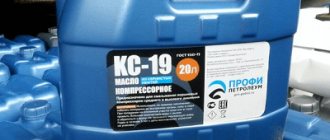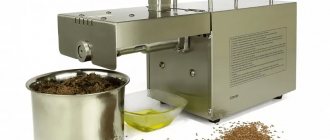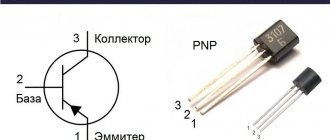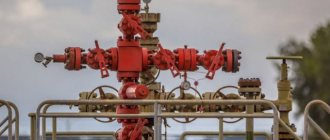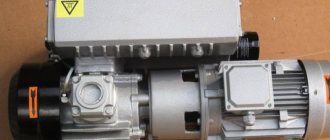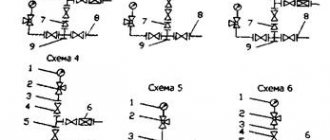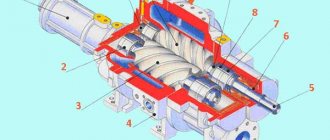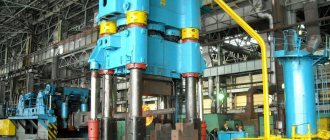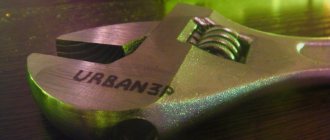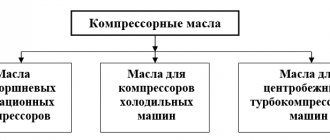A lubricator is a device for constantly supplying lubricant to a friction unit during operation of the unit or for a long period of time. Unlike manual periodic lubrication, the device provides uniform lubrication of parts with the required dosage and economical consumption of lubricant. In addition, the device allows lubricant to be supplied to hard-to-reach equipment components, which eliminates periodic disassembly for maintenance.
Lubricators are most in demand in conveyor production, where process continuity is the main technological requirement. Moreover, its cost is negligible compared to losses during downtime due to repairs or unscheduled maintenance of equipment.
The lubricator is used for:
- pneumatic tools and pneumatic drives;
- pneumatic systems and compressor equipment;
- ship power systems;
- friction units of industrial equipment: bearings, axle boxes, guides, chain gear or worm gears;
- cables, winches, pulleys and other block systems;
- electric motors and generators;
- tire changing machines.
Lubricator for pneumatic tools. A small detail that works correctly
When working with any pneumatic equipment, it is necessary to ensure that purified air, which is enriched with oil particles, is supplied to the system. A filter copes with the first task, but for the second, a lubricator for pneumatic tools is needed. With this device, the air flow is diluted with oil during the spraying process, and this greatly extends the service life of all equipment and reduces wear rates. This is especially important for those who are forced to regularly resort to the use of pneumatic devices (workshop employees, service stations, construction crews, etc.).
Modern lubricators have an autonomous design; their system allows you to calibrate the supply of lubricants during operation; thus, the pneumatic tool receives the required amount of fluid. During operation, you can control the oil level in the refill container. During operation, it is important to use the types of consumables recommended by the manufacturer: the use of low-quality or simply unsuitable oil leads to malfunctions not only of the equipment, but also of the lubricator itself.
Advantages of a mini-lubricator
Features of the use of lubricant "cyatim 221". analogues
The use of an oil sprayer is a prerequisite for the operation of pneumatic tools. Manufacturers in the user manual must indicate a list of recommended and compatible brands of lubricants.
The use of devices has the following advantages:
Automation of lubricant supply to pneumatic equipment. This saves working time spent on equipment maintenance. You just need to monitor the level of lubricant in the container. A high-quality oil-air mixture significantly reduces wear on the moving parts of pneumatic tools and increases its performance. In addition, the service life of equipment is significantly extended and non-productive costs for its repair are reduced. Reduced resource losses that occur during breakdowns and production stops
This is especially important for enterprises operating in continuous cycle conditions. Current designs of mini-lubricators are very compact and do not create interference or inconvenience when working with the tool throughout the entire shift. Multipoint devices allow simultaneous supply of up to 8 different consumers. For each, an individual mode of saturating the mixture with lubricant can be set.
How does a lubricator for pneumatic tools work?
This device is a reservoir, the body of which is made of metal, which is put on the inlet part of the pneumatic equipment and fixed to a threaded connection. When installed, the lubricator is placed after the filter, which is necessary to dry the air flow. After the air gets inside, it is enriched with oil particles and goes further into the tool itself.
It is very important that the distance of the hose between the lubricator and the device itself is no more than 10-12 meters: with a longer length, the distribution of oil with air is not as effective, and condensation begins to form on the walls, reducing productivity. If this length is not enough, it is better to use linear type lubricators, which are installed directly in front of the tool.
Modern devices may differ in thread size, construction materials and the volume of the storage tank into which oil is poured before use. In addition, devices can be single-point or multi-point, and the choice of equipment is made taking into account the characteristics of future operation. Among other things, devices are divided into two groups according to type of design:
- Lubricator filters, which are mounted on the tool itself between its handle and the hose for air flow.
- Air accessories installed on a compressor or flow distribution system.
Modular groups
Since proper air preparation is impossible without the simultaneous use of filter-driers and lubricators, when installing a pneumatic line it is logical to combine them in one housing with a single connection. Such a device is called a modular group or filter-lubricator and may additionally include an air pressure regulator and a pressure gauge.
Lubricator filters differ in the cross-section of the threaded connection, on which the throughput of the device directly depends. Therefore, for high-power pneumatic impact wrenches, it is worth choosing modular groups with threads of 3/8″ or more.
Advantages of lubricators
The use of such mechanisms is a mandatory requirement for the rational and efficient operation of pneumatic tools. The use of lubricators has many advantages:
- Lubricant in the form of oil is supplied to the structure automatically, which significantly reduces the cost of effort and time for servicing the tool.
- Oil supply significantly reduces wear rates: lubricants reduce friction of key equipment elements and make productivity much higher.
- A lubricator for pneumatic tools can significantly reduce the risk of unplanned downtime that can occur due to equipment breakdown.
- Modern devices are compact and can be installed in the most inaccessible places, while the installation angle also varies.
- The use of multi-point lubricators makes it possible to lubricate up to 8 points simultaneously.
How to choose a lubricator for pneumatic tools?
Such designs should be purchased based on the characteristics of operation and the tasks to be solved. Key features to pay attention to:
- Throughput : the lubricator is selected for equipment that has the appropriate power, and this parameter is important for the most complete provision of air flow with oil particles. If the throughput is low, the pneumatic tool will work less efficiently.
- Working pressure , which determines whether the device can cope with the load.
- Housing materials . This product must be made of high-quality steel: such devices are characterized by increased reliability, durability and minimal maintenance costs.
- Thread size and location : if there is a mismatch, the lubricator simply cannot be used in conjunction with the selected equipment.
If you have doubts when making a choice, it is better to consult with a specialist who can advise which device is most suitable for specific pneumatic equipment. After purchasing a lubricator, it is important to use the required brand of oil, which has the appropriate parameters (viscosity, alkalinity, etc.). It is necessary to check that water does not get inside, which causes corrosion of the housing, and periodically monitor the oil level.
Device price
The cost depends on several factors:
- Material of manufacture (steel, iron, brass, etc.).
- The volume of the container into which oil is poured for further distribution.
- Type of instalation.
- The number of points that the device can lubricate at a time.
- Capacity and maximum pressure.
- Manufacturer (domestic devices are 10-20% cheaper than their foreign counterparts).
As a rule, the least expensive option is to purchase a lubricator through an online store, where products for air tools are offered at discounted prices. In ordinary construction stores you can find the most popular devices that are used in conjunction with equipment for garages, workshops, construction compressor equipment, and are used for industrial and domestic purposes.
Lubricator: what is it? Description and functionality, how to choose
The use of any pneumatic tool requires that during operation the sprayer be supplied with the cleanest air possible, containing a special oil. Unknowing employees often wonder, “what is a lubricator?”
The principle of operation of the device is quite simple. It helps to carry out work evenly and improves the conditions of the operation. In order to supply fresh and clean air, it is necessary to have an air filter connected to the pneumatic tool. In the second case, you will need a special lubricant.
The lubricator, in addition to adding oil to the aerosol composition, increases both the service life of the mechanical tool and reduces the wear of the surface being sprayed. All these requirements must be met in paint shops. Most often, such equipment is used by employees of workshops, work teams and painting shops.
Most modern devices have dispensers that regulate the supplied oil flow. This allows you to monitor the adjustment of the supplied particles. In addition, using a dispenser, the level of the total amount of oil in the working container can be easily adjusted.
To increase the service life of the equipment several times, you should ensure that the fluid recommended by the manufacturer is poured into the mechanism. If consumables of reduced quality are used, there is a high risk that in addition to the pneumatic device itself, the product itself will fail.
What is a lubricator
A lubricator, or oil sprayer, is a device for creating a suspension of oil droplets in the compressed air supplied to drive pneumatic tools.
Not all compressed air consumers need to supply the oil-air mixture through a hose. It will render them unusable or interfere with normal functioning. For them, on the contrary, it is necessary to pass the air flow through an oil separator, which absorbs droplets of oil that enter it in the cylinders of a piston compressor. These are consumers such as:
- spray guns and other installations for spraying liquids and applying coatings to surfaces;
- sandblasting units;
- devices for inflating wheels and other containers;
- nozzles for cleaning surfaces and blowing out cavities of parts.
But for pneumatic impact wrenches, hammers, scissors, scrapers - all consumers containing moving parts and converting the energy of compressed air into mechanical energy of rotation or reciprocating motion.
Proper lubrication reduces friction between these moving parts, as well as their wear. The absence of the lubrication system’s own oil reservoir as such allows one to reduce the weight, dimensions and cost of pneumatic tools.
Today's pneumatic equipment market offers a large number of lubricator models, both stand-alone, mounted on a hose next to the consumer tool, and centralized, mounted on the wall next to the compressor or air line distribution unit. The devices allow you to control the degree of saturation of the oil-air mixture, selecting the optimal composition for each consumer.
During operation, it is important to monitor the level and quality of oil in the lubricator filling tank. The use of low-quality equipment that does not meet the manufacturer’s conditions or contaminated oil can accelerate the wear of the tool supplied from the station or even cause it to fail.
Repairing pneumatic tools, despite the apparent simplicity of its design, requires highly qualified specialists and special equipment. Self-repair without experience and equipment can permanently damage the instrument.
How the device works
To understand what a lubricator is and how this device works, you need to decide what this oil supply tank actually is. The body of the product is predominantly made of metal. This reservoir is “put on” the working area of the pneumatic tool, and then adjusted using nozzles with suitable threads.
The equipment itself must be installed after the air filter. Otherwise, nothing happens, or the filter will be damaged. If the additional devices are installed correctly, the supplied raw material will be enriched with air and later receive the required amount of oil. Next, the substance enters the hose itself.
In order not to reduce the quality of the operations performed, it is located at a distance of no more than 10 meters. Otherwise, the composition simply will not be supplied in the required quantity to the tool, which will certainly lead to a decrease in the quality of operations. In addition, it is necessary to ensure that no condensation remains in the hose.
However, there are situations when the hose length is simply not enough. In this case, it is best to purchase special-purpose equipment that is installed directly on the tool itself and increases productivity.
Design and principle of operation of a pneumatic impact wrench
In the figure below you can see in detail the device of a pneumatic impact wrench. The unit consists of the following elements placed in a durable metal case.
Read also: If the minced meat has a smell, what should you do?
- High performance air motor.
- Impact mechanism.
- Alloy steel chuck (stop).
- Torque regulator and reverse.
- Start button.
- A fitting for connecting the hose from the compressor.
- Air valve.
Advantages of lubricators
After it has become clear what a lubricator for pneumatic tools is, you should understand the remaining nuances. The most important thing is the advantages:
- Due to the fact that all actions carried out must meet certain requirements and conditions, additional installation of a lubricant is required. It will reduce equipment wear and increase its operation.
- Lubricant enters the products automatically. This means that workers no longer need to waste their time pouring oil into the tool.
- Minimize the risk of operational downtime, which is a very common cause of various types of breakdowns.
- Most of the mechanisms produced are universal and compact. It is installed almost everywhere.
- People will no longer have to wonder what caused the breakdown of oil equipment if a lubricator is installed.
How to choose?
The next question is as simple as possible. If production management learned what a lubricator is, they will definitely want to purchase it for their employees. Because using it in production significantly reduces the cost of repairs and the purchase of additional materials.
First of all, you need to decide on the scope of purpose and the equipment used. When it is already clear what brand of pneumatic tool will be installed, it is best to understand how much power will be required. Products with minimum values will simply not meet the conditions. And mechanisms with high power can cause constant failures on weak equipment.
After this, the material required for the device is selected. It should not allow excess oil to pass through, and no condensate should remain in the hose.
The cost of the tool and what affects it
Once a specific model has already been selected, employees must choose the most relevant cost that will pay for itself quickly. Need a cheap product? It is better to look for a product with low-quality materials. But you have to be careful. If moisture gets on low-quality metal, it can cause corrosion.
Video: Review from the master
Do you need a brand from a domestic manufacturer? There are many suppliers on the Internet who install their devices at a lower cost than foreign companies.
Also, in simple construction stores it is easy to find a special device that meets the necessary standards.
Why do you need a lubricator?
Compressed air is used to operate pneumatic tools, which are used in many production and repair areas. But the air leaving the compressor equipment is not ready for use without proper preparation. Condensation, oil and other contaminants in compressed air can cause significant damage to the instrument, significantly reducing its service life. Therefore, before feeding the air into the tool, it is necessary to clean it and add lubricant by installing a moisture separator and lubricator or a modular group in the pneumatic line, which provides comprehensive preparation.
More details about the preparation of compressed air are described in a separate article.
In most pneumatic tools, for example, pneumatic impact wrenches, pneumatic ratchets, pneumatic chisels, pneumatic screwdrivers, and so on, compressed air is used to start the drive (motor). Therefore, in addition to air purification, a special oil must be supplied to the air flow, which provides lubrication of the rubbing internal mechanisms.
Filter driers
The air in a factory or auto repair shop contains too much excess moisture, impurities and dust, which freely flow into the operating air compressor.
Impurities and moisture can be effectively separated using air filter dehumidifiers, which use fine-mesh copper alloy mesh as the filter element. Like any filter, it requires replacement during operation, which is indicated by a change in the color of the filter element.
To remove excess moisture from the filter, there is a tap at the bottom of the tank. Filter driers are connected at the beginning of the pneumatic line or directly at the tool.
Main differences:
- Inlet size
. Typically these are 1/4″, 3/8″ and 1/2″ and should match the hoses being used; - Degree of purification
. Higher levels of cleaning may be required for paint equipment to minimize excess paint contamination; - Availability of pressure gauge and pressure regulator
.
There are special fine filters for painting equipment. They have several cleaning elements installed, operating sequentially.
The Garage Tools store offers Licota filters for a wide variety of equipment and purposes.
Types and where to install
Lubricators are divided into:
In the first case, the lubricator is installed permanently in the air treatment system after the pressure regulator or after the moisture separator with a regulator. The entire system is installed as close to the instrument as possible. The length of the hose between the lubricator and the pneumatic equipment should not exceed 10 meters. It is worth remembering that such a lubricator should be located above the tool, since the oil aerosol does not move upward well.
A multi-point lubricator can serve several tool stations. Lubricators can have different inch inlet/outlet diameters, as well as oil flasks of different volumes.
Throughput depends on the inlet/outlet diameter, so the lubricator should be selected based on the amount of air consumed by the tool to ensure maximum efficiency for all operators. Most models have a special screw that allows you to adjust the intensity of oil supply.
In the second case, the lubricator is installed immediately after the tool handle and provides lubricant to a single tool. In addition, such a lubricator can be installed in a pneumatic line along with a mainline model to ensure greater efficiency.
Manual lubrication syringes
The SKF range includes manual and electric grease guns, hand and pneumatic grease pumps. They can be used not only to re-lubricate bearings, but also to lubricate other lubrication devices.
Grease guns TLGH, 1077600 Used with cartridges or free grease. Stroke volume TLGH - 0.9 cm3, 1077600 - 1.5 cm3.
One-handed grease gun LAGH Refillable with pumps or a special device, or can be used with a cartridge. Easy to use.
Syringe for LAGP cartridges Set with three tips.
Cordless grease gun TLGB Built-in flow meter. The battery charge level is shown on the display. Maximum operating pressure: 400 bar. The battery charge is enough for 15 standard 0.4 kg cartridges.
How to add oil?
Oil is poured into a stationary lubricator using a funnel through a hole located on the upper plane of the equipment. As a rule, the hole is closed with a plug for an internal hexagon. If the lubricator does not have a special hole, then the oil is poured into the removed flask and then installed back.
Oil is poured into a small lubricator through a hole on the body, which is unscrewed with either a Phillips or flat-head screwdriver. The oil is added using a small plastic oil can. In order to control the oil level in the lubricator, there are two marks on its body - the maximum and minimum volume levels.
What kind of oil to fill
Sometimes when purchasing lubricant lubricant there is a temptation to save money. Purchasing cheap oils of obscure origin from little-known manufacturers seems like savings only at first glance. Such a replacement will inevitably lead to disruptions in the operation of the oil evaporator, uneven saturation of the air flow with lubricant, deterioration of the lubrication conditions of the pneumatic tool, a decrease in its service life and failure.
You need to use exactly the oil that is recommended in the instructions for the tool, or oil from the list of analogues approved by the manufacturer for use.
Separately, it is necessary to ensure the cleanliness of the lubricant, the absence of chemical contaminants and mechanical inclusions. Such “additives” will damage the tool even faster.
Lubricators
A lubricator is a device for constantly supplying lubricant to a friction unit during operation of the unit or for a long period of time. Unlike manual periodic lubrication, the device provides uniform lubrication of parts with the required dosage and economical consumption of lubricant. In addition, the device allows lubricant to be supplied to hard-to-reach equipment components, which eliminates periodic disassembly for maintenance.
Lubricators are most in demand in conveyor production, where process continuity is the main technological requirement. Moreover, its cost is negligible compared to losses during downtime due to repairs or unscheduled maintenance of equipment.
The lubricator is used for:
- pneumatic tools and pneumatic drives;
- pneumatic systems and compressor equipment;
- ship power systems;
- friction units of industrial equipment: bearings, axle boxes, guides, chain gear or worm gears;
- cables, winches, pulleys and other block systems;
- electric motors and generators;
- tire changing machines.
Automatic lubrication
Lubricators are used for single-point or multi-point lubrication. Compared to manual lubrication, such a device is able to provide a more accurate and dosed supply of grease or oil lubricant contained in it.
Single-point lubricators with gas drive LAGD Operating time from a month to a year. The compact size allows you to install lubricators in hard-to-reach places. ATEX for zone 0.
Single Point Lubricators with Electromechanical Drive TLSD Simple lubricators suitable for environments with temperature variations. Pressure up to 5 bar.
Single-point lubricators with electromechanical drive TLMR Thanks to pressures up to 30 bar, they can be installed away from lubrication points. Extended operating time up to 24 months.
Multi-point automatic lubricators TLMP Up to 18 lubrication points. Full set. Tank volume 1l.
Species and types
Lubricators are divided into air (ejector and linear injection) and automatic. Air pumps perform the function of saturating the air with oil. Automatic, in turn, are divided according to the type of injection mechanism: mechanical, electrochemical and electromechanical. The devices can also be used for one lubrication point (single point) and for several points (multipoint or system).
Air lubricators
When air is saturated with oil (oil mist), it means air that is supplied under pressure to pneumatic tools or pneumatic drive systems. The oil content in the working air ensures lubrication of cylinders, pistons, turbines, throttle mechanisms, protecting against premature wear and corrosion.
Features of aerial species:
- the lubricant supply mechanism in air models operates on air passing through the device, so oil is not supplied constantly, but only when the tool is operating;
- do not require connection to the network or independent power sources;
- once the lubricant is finished, the devices can be refilled;
- some models include an air filter;
- main characteristics of air models - throughput and operating pressure range are the main criteria for selection.
Operating principle and installation options for the ejector lubricator
The operation of the air ejector device is based on the Venturi effect - a local decrease in pressure caused by the ejecting air flow. As a result, the oil is drawn from the flask through a vertical tube and enters the spray chamber. The oil, picked up by the main air flow due to turbulence, turns into a dispersion and in this state moves through a pipe or hose to the operating mechanism. An adjusting screw is provided to adjust the oil supply.
Depending on the diameter of the passage channel (throughput), the lubricator can serve one or more work stations. For multi-point applications, installation is carried out in the compressed air supply system, as close as possible to the operating mechanisms. To serve one point, the device is installed at the point of connection to the flexible hose system.
When installing an air model, it is necessary to ensure reliable fixation with a vertical position of the flask or cartridge. It is advisable to place the device above or at the level of the working space of the tool or system.
Linear lubricator
The device is connected directly to the line of one working mechanism and is single-point. The linear model is small in size and, as a rule, is connected at the point where the hose is connected to the pneumatic tool.
According to the principle of operation, such a device is injection. In it, the air flow from the injector captures oil particles and sprays them into the main flow. These models are also adjustable.
Automatic lubricators
This group of mechanisms is designed for constant controlled supply of lubricant, including plastic. The operation of such devices is based on squeezing lubricant from the reservoir directly into the lubrication zone or through an oil pipeline system.
Mechanical
This type of mechanism has disadvantages, so it is practically not used. At the same time, its device gives a clear idea of the operating principle of an automatic lubricator. The main power mechanism is a spring that provides pressure on the piston, which squeezes the lubricant out of the cylindrical cylinder.
The disadvantage of this model is the uneven supply of lubricant, since the spring, as it straightens, loses its elasticity and the force of its influence weakens. The disadvantage has been eliminated by a new technology that provides constant pressure on the piston, regardless of the amount of lubricant remaining in the reservoir.
Electrochemical
The technology for displacing lubricant from a cylinder is based on the generation of hydrogen. The device uses a gas generator, powered by batteries. As hydrogen accumulates above the piston, pressure is created, which, instead of a spring, acts on the piston and displaces the lubricant. The use of a piston in this case not only eliminates direct contact of hydrogen with the lubricant, but also allows the housing to be positioned in any position.
Modern models provide adjustment from 1 to 12, that is, all the lubricant contained in the container will be used up in 1-12 months, depending on the selected mode.
Electrochemical models are available as single-point, which are installed directly on the lubrication unit, and multi-point with tubes for connecting to several units at the same time. If installation on equipment is not possible, special components are used in the form of tubes for supplying lubricants over short distances.
Electrochemical lubricators are produced in various volumes with lubricants of varying consistency and purpose. Their main advantage is their compactness, since almost the entire volume of the device is occupied by a reservoir with lubricant. This type is also characterized by complete autonomy and ease of installation or replacement.
Electromechanical
Such devices can be classified as centralized lubrication systems. They are mainly used for several lubrication units. The lubricant supply principle is based on the use of an electrically driven pump. The device is capable of creating a fairly high lubricant supply pressure, on average up to 40 bar, so it can be used with lubricants of various consistencies and supply them over a considerable distance within the workshop.
In general, the “filling” of an electromechanical type can vary greatly. The market offers models ranging from simpler ones with a multi-point feeding system and manual adjustment to programmable ones. Multifunctional programmable devices not only separately dose the amount of lubricant for each lubrication point, but also change modes depending on the intensity of equipment operation.
For such models, a removable cartridge is used as a lubricant reservoir, which can always be replaced or refilled. Electromechanical types are powered from the mains or from an autonomous power source.
What is artificial insemination of cows?
Artificial insemination of cows is a fertilization method, the essence of which is the introduction of selected sperm from a stud bull into the uterus of the animal. As a result of such manipulation, after an appropriate amount of time, replenishment appears in the herd.
Thanks to this technique, the producer’s sperm is used more rationally, since one portion is enough to inseminate several cows at once.
Artificial insemination of cows is carried out based on the reproductive cycle of the animal. For this reason, before performing the manipulation, it is necessary to determine at what time it begins. It is known for certain that cows can give birth annually.
Cow insemination
There are three stages of the sexual cycle, the total duration of which is 3 weeks. The specialist must understand these stages in order to choose the right moment to perform the procedure.
The process of estrus in a female
A cow's estrus is one of the stages of the animal's reproductive cycle. At this stage, follicles mature in the body and a sex hormone is synthesized, which affects the functioning of the secretion. This substance is produced by the uterus. The secretion is secreted in a large volume, due to which it reaches the surface of the vulva. As a result, it becomes filled with blood and swells.
When the heat stops, the secretion acquires a thick consistency and the liquid becomes cloudy. This stage can be recognized by the following signs:
- restless behavior of the animal;
- cow activity;
- refusal to eat.
The duration of estrus ranges from several hours to several days.
How to determine if a cow is ready for insemination
The animal’s readiness for reproduction according to physiological parameters occurs already at the age of 9-10 months. The exact timing is influenced by the following points:
- breed of animal;
- place of residence;
- nutrition and care.
Full readiness for insemination occurs when the individual is 24 months old. If conception does not occur at this time, milk production decreases and feed intake increases.
Only a professional can understand exactly when the female’s body is ready for fertilization. At the same time, he must focus not only on physiological processes, but also on the behavior of the animal.
A specialist determines a cow’s readiness to conceive as follows:
- performs an examination of the genital organs and determines their condition;
- checks the vagina and cervix;
- rectally determines the condition of the follicles; by their diameter, the professional will know what stage of heat is occurring.
Thanks to this, the professional knows exactly how many hours are left before ovulation and can perform insemination in a timely manner.
Choosing the moment of artificial insemination of cows
Factors influencing the onset of sexual estrus
The timing of the onset of sexual heat depends on the following factors:
- physiology of the individual;
- animal health;
- food quality;
- conditions of stay;
- care.
Signs that an animal is ready for insemination:
- the immobility reflex appears;
- mucus is formed;
- the vulva increases in size;
- You can palpate a mature follicle rectally.
Fertilization of a cow is performed twice:
- after determining the start of the hunt;
- after 12 hours, always before milking.
Next comes the period of waiting for the end of the hunt. In most cases, the heifer begins to bleed; in the cow, this process occurs only in 50 cases out of 100. This symptom confirms the period of heat, but does not indicate successful conception.
Questions and answers
What position should the lubricator be in?
The air ejector lubricator is positioned strictly vertically so that the oil intake tube always remains immersed in oil. With a short hose (up to 5 m), the device can be located below the connected tool, and with an air hose length of more than 5 m, it is advisable to place it higher to prevent oil from settling in the hose. For a linear or electrochemical model, position does not matter.
Can I refill the electrochemical lubricator and use a different lubricant?
Can. But you need to understand that the gas generator is disposable and when refilling it must be replaced with a new one. You can also use another lubricant for refilling, but the lubricant must have the same consistency. The pressure created in the cylinder is designed to displace a specific lubricant. If the consistency is lower, the flow rate will increase, and if it is higher, the pressure will increase above the prescribed norm and the safety valve will operate. Also, when using a different lubricant, even taking into account the consistency, the feeding accuracy may be affected, albeit slightly.
Two rules that must be followed when installing any lubricator.
- It is necessary to clean the lubricant supply channel to the equipment unit. When using a plastic lubricant, the channel can be pumped with a grease gun.
- When activating the device, you need to make sure that a drop of lubricant comes out of it.
